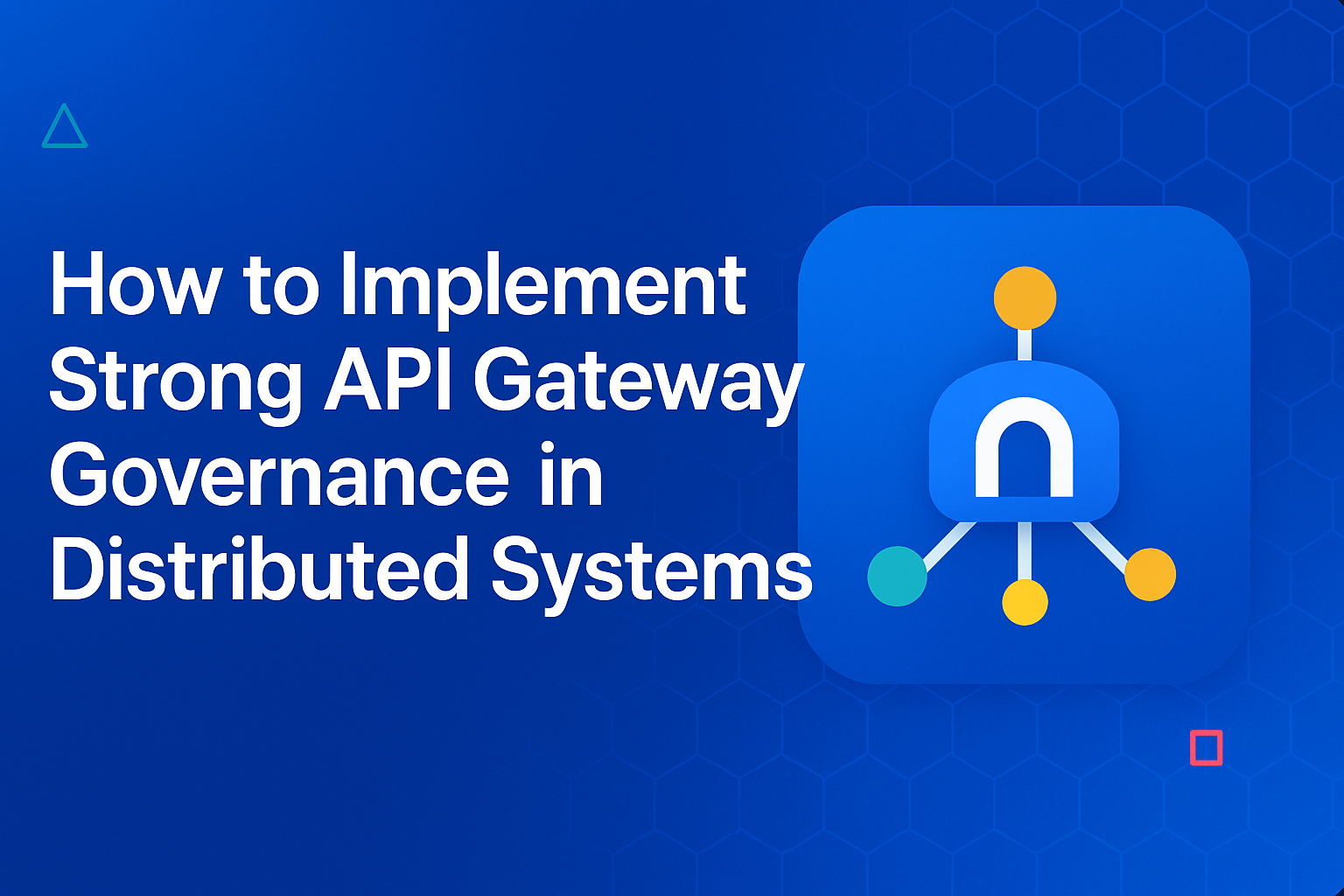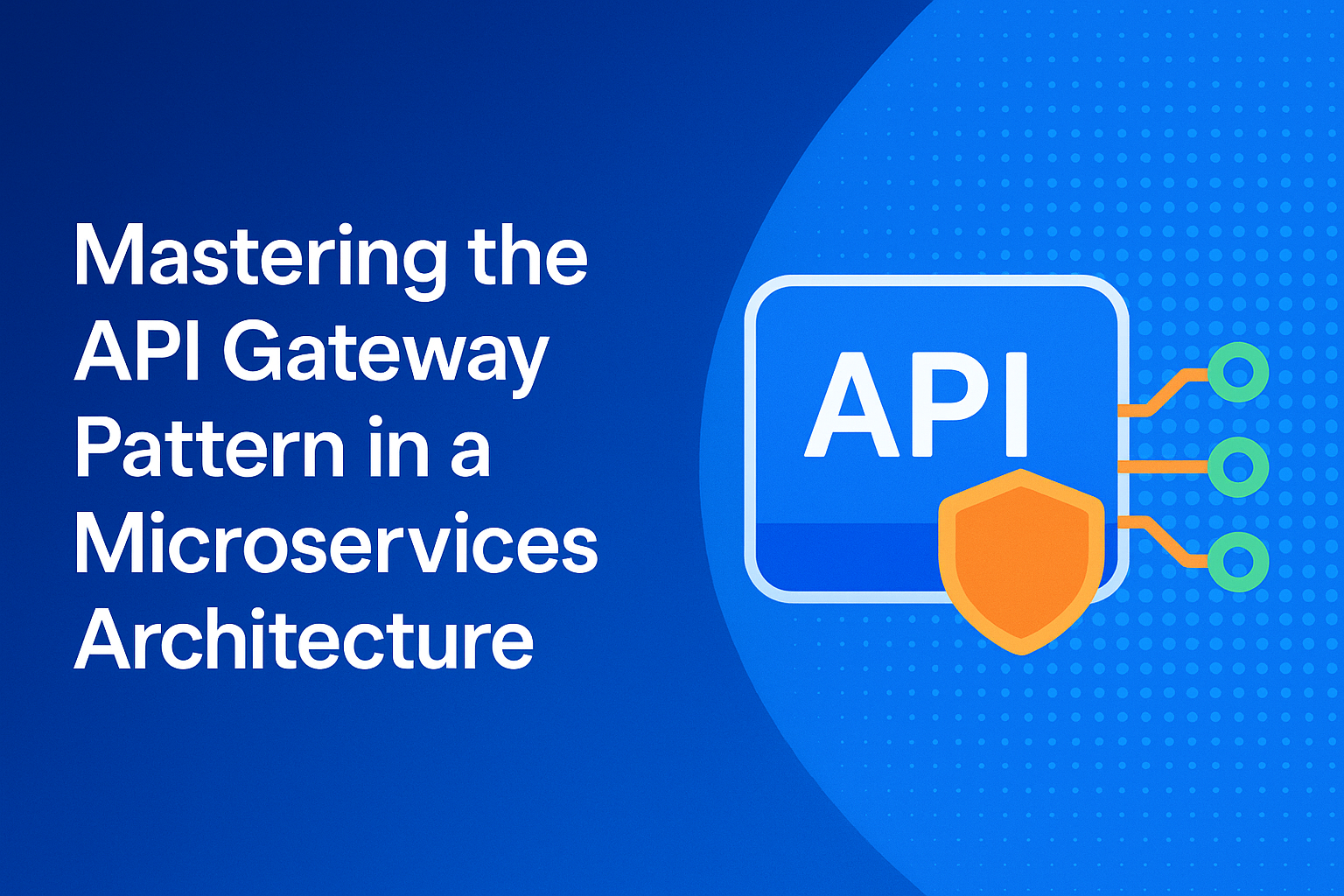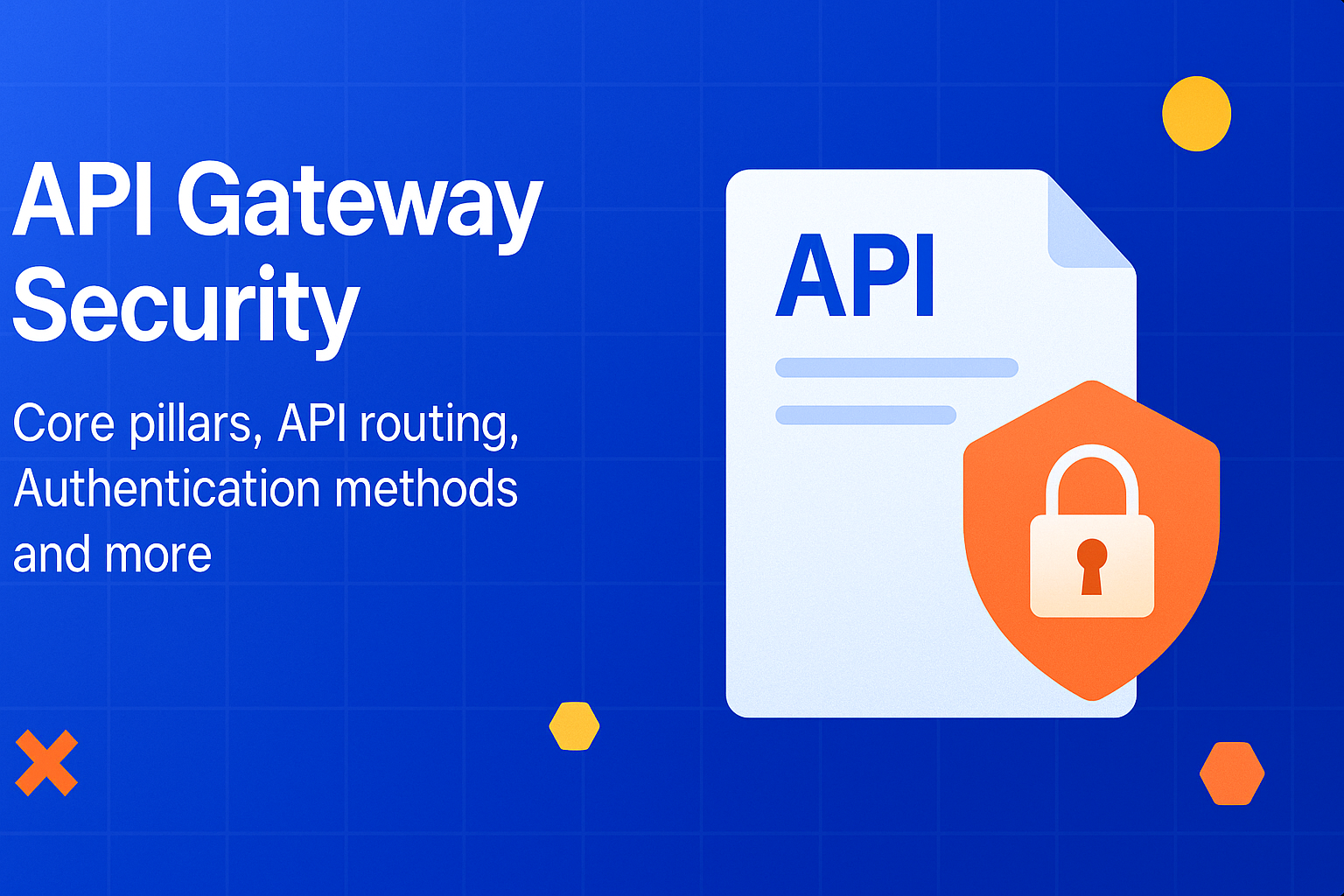
API Gateway Governance is the foundation of reliable distributed systems. As services expand across teams and clouds, manual checks can’t keep pace. Governance must be enforced in the gateway at runtime so authentication, rate limits, and compliance rules apply to every request automatically. This keeps distributed architectures predictable and secure as they scale.
Embedding governance into the gateway also improves speed and reliability. Standardized design rules, automated checks, and unified traffic control reduce drift and cut down on rework. With built-in observability through logs, metrics, and traces, teams gain real visibility into performance and policy health, enabling faster issue resolution.
At enterprise scale, governance becomes an enabler of growth. Centralized policies, federated models, CI/CD automation, and AI-driven detection ensure consistency across multiple gateways and environments. Platforms like Helix Gateway by DigitalAPI turn governance into an always-on capability that strengthens security, improves developer efficiency, and drives long-term API value.
Book a Demo and see how Helix transforms your API governance
It bakes your policies, like authentication, throttling, and observability, right into the gateway itself. Not written down somewhere.
This means API gateway governance that scales with your APIs, travels with your requests, and executes without hesitation. Because in a world of countless services and shifting boundaries, trust isn’t handed out at design time. It’s proven at runtime, every second, every request, everywhere.
In this blog, we figure out how to implement API Gateway Governance that actually works in distributed systems. So let’s get started
Why API gateway governance matters?
Strong API Gateway Governance matters a lot because it turns invisible structure into visible reliability. It ensures every request behaves as expected, every service stays aligned, and every deployment runs without risk.
This way, scale, speed, and reliability aren’t trade-offs, but they’re outcomes of a structure you can trust. Because distributed systems may look limitless from the outside. But inside, they’re held together by one thing, and that’s governance. Here’s a deeper look at why API gateway governance really matters:
1. API Gateway governance lets you scale predictably
Distributed systems don’t fail from lack of speed, but they fail from lack of consistency. As services multiply, gateways bring order to the sprawl, which enforces security, routing, and performance in motion. With governance embedded, scale becomes predictable, not precarious.
2. Your systems become agile
Static policies can’t keep pace with dynamic systems. But when governance is built into gateways, it travels with every request, authenticating, throttling, and validating traffic across clouds and regions. It’s policy enforcement that scales as natively as your architecture does.
3. Guardrails improve developer efficiency
Speed is the reward for good governance. When gateways automate rules and handle enforcement, teams move faster with fewer reviews and rollbacks. Developers stay focused on building, not firefighting.
4. Runtime reliability improves
Gateways turn governance into execution, enforcing the same policies that were promised in design. Every request, every region, every second, it ensures systems behave as expected with runtime API governance.
5. Systems become consistent
For distributed API management, inconsistency is technical debt. Governance turns shared standards into living systems, like reusable templates, versioning rules, and naming conventions enforced at the gateway. This way, APIs feel consistent and well-managed, even when hundreds of teams are building them in parallel.
6. Security and compliance become the DNA
In fast-moving architectures, human checks often don’t scale with APIs. Gateway governance shifts compliance from documentation to execution. This ensures that authentication, encryption, and access control happen automatically with every request. So teams stay secure by design, not by reminder.
In short, API Gateway Governance matters because it:
- Keeps distributed systems consistent and predictable
- Embeds security and compliance at the gateway level
- Improves developer velocity through automation
- Ensures reliability and stability at runtime

Core Pillars of API Gateway Governance
The pillars of API Gateway Governance hold systems steady through shifting releases, scaling services, and unpredictable traffic. They balance velocity with reliability, autonomy with control, and visibility with performance. When one weakens, latency spikes, policies drift, and incident queues fill fast.
Together, these pillars make distributed systems dependable at scale.
Here are the five main pillars of API gateway governance:
1. Security, authorization & compliance
Security is the first pillar because everything in a distributed system depends on trust. And trust breaks fast. All it takes is one weak token check, a missing rule, or a service that forgets to validate something important, to shake the whole system.
Strong gateway governance keeps that from happening by moving security out of human memory and into automated enforcement. It becomes the guardrail between intention and execution, handling the hard stuff, like authorization decisions with OPA and Rego. This ensures that access rules stay precise and consistent.
Then, it uses mTLS and token validation to build trust between services in motion, not just on paper. And because policy-as-code sits inside the flow, compliance rules for HIPAA, GDPR, or PCI get applied automatically instead of waiting for someone to remember them.
In the end, the gateway makes security something the system does on its own. No drift. No exceptions.
2. Traffic, rate limiting & cost control
Speed feels great until it costs you uptime or money. Real scalability is controlled, measured, and fair.
That stability comes from a few key practices:
- Multi-dimensional rate limits balance traffic across tenants, endpoints, and plans.
- Adaptive throttling reacts in milliseconds to surges before failure spreads.
- Cost-aware controls stop AI or LLM requests from torching budgets overnight.
- Gateways enforce these limits globally, keeping performance predictable.
This is how scale stays efficient, fast enough to serve, smart enough to survive.
3. Consistency and standardization
At scale, inconsistency becomes chaos in disguise. Consistency solves that. It gives 100+ APIs a shared spine so the platform feels unified, no matter who built what.
Here’s how:
- OpenAPI-first specs make design rules enforceable, not suggestive.
- Spectral linting and CI/CD validation catch drift before deployment.
- Versioning and migration rules protect clients through change.
- Automated deprecation retires zombie endpoints before they rot production.
When standards live in code, consistency becomes the system’s native language.
4. Observability & runtime accountability
Distributed systems move fast and break quietly, and guessing never keeps up. Gateway governance fixes that by turning every request into a signal you can trust. Traces, logs, and metrics all flow through the gateway, giving you a simple view of how traffic moves and where things drift.
Observability becomes accountability. OpenTelemetry ties gateways and services into one trace, so you see the full path from start to finish. You see the full picture behind latency, timestamps behind failures, and with PII stripped at the gateway, visibility doesn’t put privacy at risk.
This is where governance becomes proof. You see policies working in real time. And when they don’t, the system shows you exactly where things slip.
5. Platform enablement
Governance that scales eliminates friction all across the development and API management lifecycle. It reduces the cognitive load on developers by turning rules into defaults and policies into automatic behaviors. All because the system takes care of the guardrails so teams can focus on building, not chasing compliance.
And that changes how teams experience the platform itself:
- Policies live in Git, versioned and deployed automatically.
- Gateways reload OPA rules instantly, no handoffs or approvals.
- Developer portals show APIs, docs, quotas, and versions in one view.
- Metrics track onboarding speed and satisfaction in real time.
This gives the platform team a pulse on how well the experience works. When automation meets accessibility, governance stops being overhead and becomes infrastructure.
Why governance belongs in the gateway
Governance belongs in the gateway because it’s the only place where enforcement actually happens.
Think of it this way: policies written at design-time describe intent, but gateways execute it in real time. Every request, every token, every route passes through this layer, making it the one point in a distributed system where trust, security, and compliance can’t just be documented, but they’re proven.
So when you break it down, there are clear reasons governance belongs in the gateway, and nowhere else. Here are those reasons:
1. Visibility: The gateway sees everything
Distributed systems feel like a swarm. Every service moves in its own direction with its own logic and its own team behind it. The gateway is the one place where all that motion meets a single checkpoint. That moment gives you true central enforcement.
Technically, it’s where authentication lives. It’s where rate limits hit, and it’s where policies stop being suggestions. The gateway turns scattered intent into consistent behavior, cutting drift before it spreads.
2. Runtime enforcement gets automated
OpenAPI linting helps shape good design, but runtime is where the real truth shows itself. An expired token. A broken TLS handshake. A rogue spike that tries to break the system. These things don’t show up in CI. They show up in flight.
Only a gateway can catch them at the exact second they happen. That is why runtime enforcement belongs there. It’s where APIs stop looking correct and start behaving correctly.
3. The gateway makes scale more governable
As services multiply across clouds and teams, risk doesn’t rise in a straight line. It stacks up fast. Governance at the gateway keeps that stack from tipping over. A single update can roll out everywhere. A new policy can land without forcing every service to redeploy. Finally, control stays proportional to growth. That’s how enterprises scale without slipping into chaos.
4. Gateway helps prove trust at runtime
Zero trust is the philosophy that dictates the entire architecture. So every request has to prove itself by default. Because nothing is trusted, not even internal traffic.
Naturally, the gateway becomes the place where that proof happens. It checks tokens in motion, verifies handshakes on the fly, and filters out anything that doesn’t belong. This way, trust is never assumed and always earned in real time. When that happens, the system stays honest even as it scales.
5. Gateways centralize enforcement
Good governance should never slow developers down. When the gateway enforces authentication, throttling, and compliance, teams don’t waste cycles rebuilding the same controls over and over. They inherit governance by default. It becomes infrastructure. Not overhead. Not friction. This is how velocity rises without sacrificing control. It’s also how consistency stops being a hope and becomes a fact of the platform.
How to implement an enterprise-ready API gateway governance framework
An enterprise-ready API Gateway Governance Framework is a layered model that standardizes security, compliance, and automation across distributed gateways, ensuring consistent policy enforcement at scale in multi-cloud environments.
And at that scale of an enterprise, API governance can’t rely on manual reviews or tribal knowledge. You need a system that enforces policies, not just defines them. This means a framework built for automation, visibility, and control across hundreds of teams and thousands of APIs.
Here’s what that framework looks like in practice:
1. Centralize policies through a central control plane
Governance starts at the control plane, but it’s enforced everywhere your APIs live. A central Git-based policy repo becomes the source of truth for authentication, encryption, and rate limits, giving the entire platform one shared baseline. OPA and Rego help separate decision logic from the services themselves, so policies stay flexible and consistent without forcing developers to rebuild controls.
Those policies then sync automatically across every gateway—Kong, Apigee, AWS—so updates roll out in real time without manual effort. The system stays aligned, the rules stay current, and teams move fast without losing control
2. Scale with a federated governance model
When organizations grow past a few hundred developers, centralization breaks. To keep governance efficient, it’s best to federate it. So you can deploy a shared model that sets global policies for compliance, local flexibility for innovation.
For example, a bank cuts integration time from weeks to minutes using Apigee Hybrid and centralized CI/CD.
3. Automate policies with code and pipelines
Manual governance doesn’t scale, but automation does. Treating policies like code lets teams define, test, version, and deploy rules without the slow handoffs that normally drag governance down. The process becomes predictable instead of fragile.
So by building rollouts, drift detection, and rollback directly into CI/CD, the system catches mistakes before they hit production. Human error drops. Consistency rises. And governance becomes something the platform handles for you, not something teams chase after.
4. Ensure observability and accountability
You can’t govern what you can’t see. So you need to:
- Track policy coverage, compliance pass rate, MTTR, and drift detection events.
- Leverage tools like Helix to centralize dashboards and tie platform, security, and compliance data together.
This way, you get real-time visibility into whether policies are working, not just whether they’re configured.
5. Leverage AI for next-gen governance
AI also adds a layer of instinct to the platform. It spots traffic anomalies in real time and adjusts limits before a spike turns into an outage. Not only that, but it can roll back bad policies, fix broken configs, and reroute traffic the moment something drifts. This way system stays steady because it reacts on its own, not after a human notices the problem.
How an API Gateway (like Helix Gateway) Supports Governance
Most gateways move traffic. Helix governs it. In modern distributed systems, governance can’t only live in documentation; it has to live where the traffic flows. Helix Gateway by DigitalAPI was designed for that exact purpose. To turn governance from a checklist into an always-on capability that’s enforced automatically, not manually configured.
Its governance is built into the gateway, not bolted onto it. So, the API gateway supports governance by:
1. Unifying policy enforcement across APIs
Governance starts with consistency, which translates to every request, every environment, and every team following the same rules. That’s where Helix by DigitalAPI comes in.
- Helix applies authentication, rate limiting, and encryption policies centrally, ensuring zero policy drift.
- Federated controls let teams operate independently while inheriting enterprise-wide security and compliance baselines.
- Policy-as-code integration ensures governance isn’t a runtime patch; it’s versioned, reviewed, and automatically enforced.
Naturally, every service runs under the same guardrails, no matter who built it or where it’s deployed.
2. Automating governance in CI/CD
Helix ties governance directly into the delivery pipeline, so policy enforcement happens before and after deployment.
- Every merge triggers syntax checks, drift validation, and deployment to gateways with no manual steps.
- Built-in rollback means if a policy breaks, recovery happens in minutes, not days.
That means your governance moves as fast as your releases with Helix. All, without breaking compliance.
3. Enabling real-time visibility into governance
Helix makes every rule traceable, so governance can be tracked and effective
- It comes with full-stack observability built in, no third-party dependencies.
- It logs every request and metric correlated to its policy.
- It unifies the dashboards showing policy health, API performance, and compliance status in one view.
As a result, you don’t guess if governance is working; you see it live in real time.
4. Securing and segmenting traffic by design
Helix enforces zero-trust at the edge because in distributed systems, every request should prove it belongs. To do that, it:
- Authenticates and encrypts traffic using mTLS and fine-grained authorization, allowing only verified entities to pass through.
- Enforces HIPAA, GDPR, and PCI controls automatically at runtime, so compliance happens without developer overhead.
- Isolates tenants completely, ensuring one customer’s data or load never interferes with another, even at massive scale.
5. Turning governance into business value
Helix goes beyond runtime enforcement, turning governance into measurable business value. Helix offers you capabilities like
- Transforming governed APIs into discoverable, monetizable assets with its built-in API Marketplace.
- Ensuring APIs are MCP-compliant and AI-ready, so they can be safely consumed by LLMs and agentic systems without schema rewrites.
- Governing access, usage, and cost, accurately tracking who accessed what, how often, and at what price.
FAQ
1. What does API gateway governance mean?
API Gateway Governance is the rulebook that guides how your organization’s APIs are architected, built, and managed through an API gateway. At its core, API Gateway Governance is the framework that keeps your APIs consistent, secure, and reliable, especially as you scale. It’s what turns guidelines into guardrails, ensuring that security, compliance, and performance aren’t just goals, but guarantees.
2. How does an API gateway enforce governance policies?
An API gateway enforces governance by acting as the runtime checkpoint for every request. It authenticates users, validates tokens, applies rate limits, encrypts traffic, logs activity, and blocks violations, all before the request reaches backend services.
3. Why is API governance important for microservices?
In microservices, dozens of teams deploy independently, making it easy for standards to drift. Governance ensures every service follows the same security, versioning, and documentation rules, which prevents chaos at scale. It also really reduces duplicated effort, speeds up integrations, and keeps distributed systems consistent and compliant.
4. How do you implement governance across multiple API gateways?
Simply by using a federated governance model. This means you define global policies centrally, but let local teams extend them for specific regions or products. And because you use an intuitive central control plane (like Helix by DigitalAPI) to distribute policies consistently across gateways, you ensure nothing drifts out of alignment anywhere, all without breaking your momentum.
5. How does governance improve security and compliance?
Governance enforces security and compliance at runtime. This ensures encryption, authentication, and authorization are applied consistently across all APIs. It also creates complete audit trails, documenting every access, policy decision, and response for transparency.
You’ve spent years battling your API problem. Give us 60 minutes to show you the solution.
.svg)



.png)



